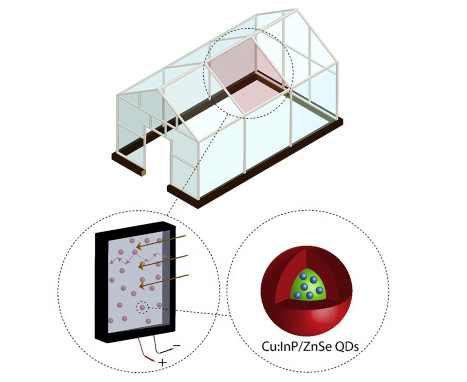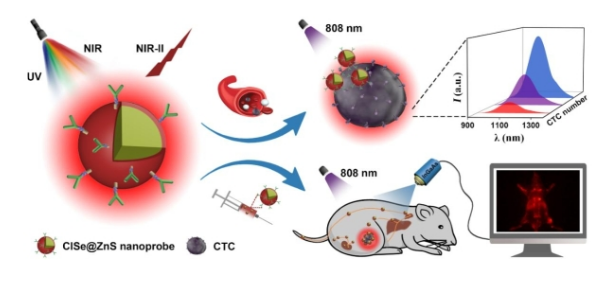Performance regulation and biomedical application of near-infrared quantum dots
近红外量子点的合成方法:近红外量子点是一种具有在近红外区域发射荧光的纳米材料,其发射波长可以通过控制其大小、形状、组成和壳层等因素来调节。常用的合成方法有热解法、水热法、微波法、溶剂热法等。
近红外量子点的表面修饰:近红外量子点的表面修饰是为了提高其稳定性、分散性、生物相容性和靶向性,以及增加其功能性基团。常用的表面修饰剂有有机配体、无机壳层、聚合物、生物分子等。
近红外量子点的生物医学应用:近红外量子点由于其高荧光量子产率、窄发射峰宽、长荧光寿命和低自身荧光背景等优点,被广泛应用于生物医学领域,如生物传感 、生物成像 、光动力治疗 、光热治疗等。
Synthesis method of near infrared quantum dot: Near infrared quantum dot is a kind of nanomaterials with fluorescence emission in the near infrared region, whose emission wavelength can be adjusted by controlling its size, shape, composition and shell. The commonly used synthesis methods include pyrolysis method, hydrothermal method, microwave method, solvent thermal method and so on. Surface modification of near-infrared quantum dots: The surface modification of near-infrared quantum dots is designed to improve their stability, dispersion, biocompatibility and targeting, as well as to increase their functional groups. Commonly used surface modifiers include organic ligands, inorganic shell, polymers, biomolecules, etc. Biomedical applications of near-infrared quantum dots: Near-infrared quantum dots are widely used in biomedical fields, such as biological sensing, biological imaging, photodynamic therapy, and photothermal therapy, due to their advantages of high fluorescence quantum yield, narrow emission peak width, long fluorescence lifetime and low autofluorescence background.


Reference Documentation:
[1]Wang, X., Qu, L., Zhang, J., Peng, X., & Xiao, M. (2016). Near-infrared light controlled photocatalytic activity of carbon quantum dots for highly selective oxidation reaction. Nanoscale, 8(15), 8005-8014.
[2]Li, H., Kang, Z., Liu, Y., & Lee, S. T. (2012). Carbon nanodots: synthesis, properties and applications. Journal of Materials Chemistry, 22(46), 24230-24253.
[3]Liang, W., Chen, M., Tu, D., Chen, X., & Yang, Z. (2020). NIR-II emitting CuInSe2/ZnS quantum dots for in vivo tumor targeting imaging and image-guided surgery. Nano Today, 35, 100941.
18915694570
Previous: Intracellular in situ
Next: BK Oncolytic virus pla


